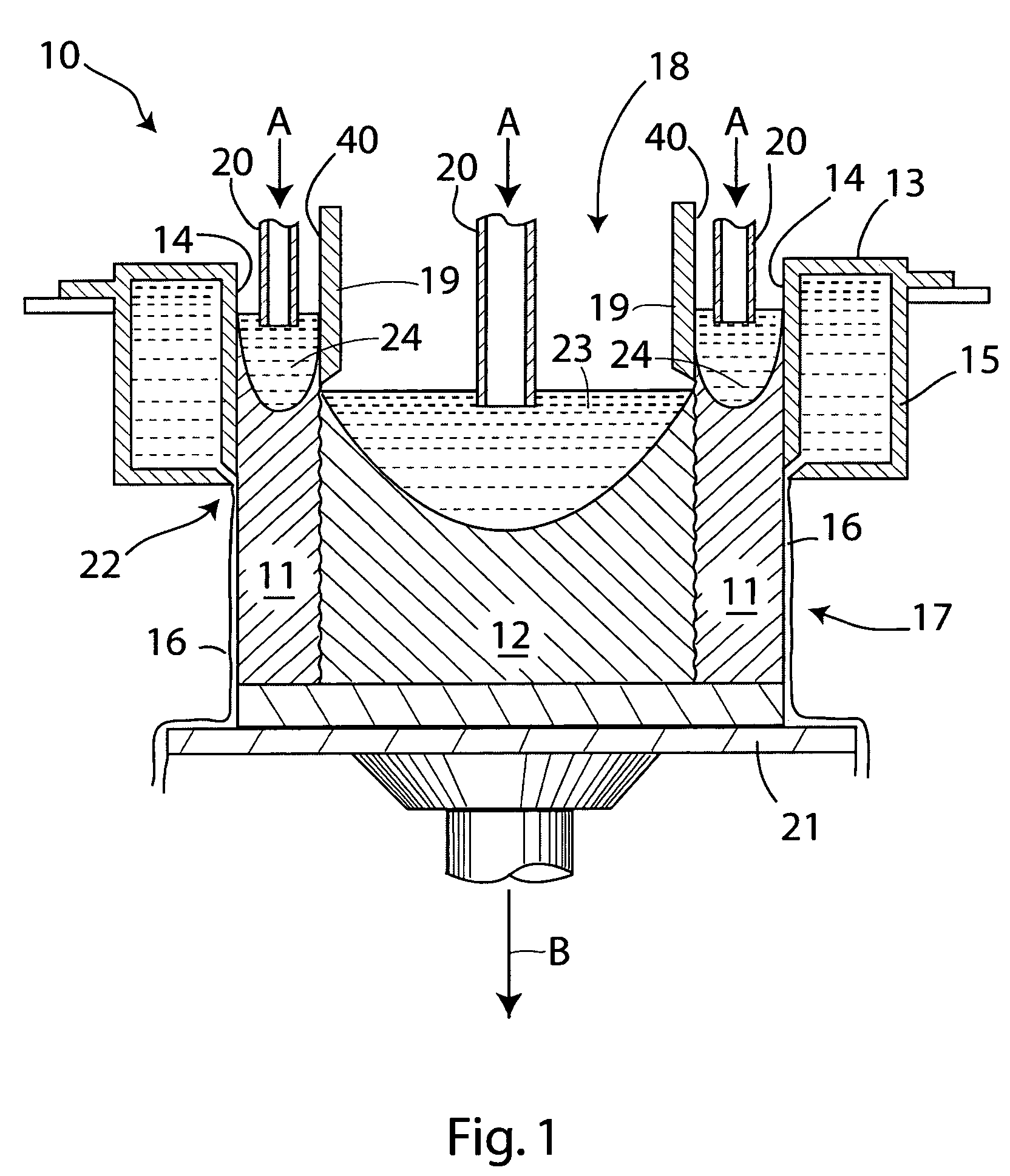Sequential casting of metals having the same or similar co-efficients of contraction
a technology of co-efficients and proportions, applied in the field of direct chill casting of metal layers, can solve the problems of difficulty, cladding layer may not bond as securely with the core layer, etc., and achieve the effect of convenient making for specified metal combinations
- Summary
- Abstract
- Description
- Claims
- Application Information
AI Technical Summary
Benefits of technology
Problems solved by technology
Method used
Image
Examples
Embodiment Construction
[0023]The present invention may employ or be used with casting apparatus of the type described, for example, in U.S. Patent Publication No. 2005 / 0011630, published on Jan. 20, 2005 in the name of Anderson et al. (the disclosure of which is incorporated herein by reference). This apparatus makes it possible to cast metals by sequential solidification to form at least one outer layer (e.g. a cladding layer) on an inner layer (e.g. a core layer or ingot). The invention also employs and extends techniques disclosed in U.S. Pat. No. 6,260,602 to Wagstaff (the disclosure of which is also incorporated herein by reference).
[0024]It should be explained that the terms “outer” and “inner” are used herein quite loosely. For example, in a two-layer structure, there may strictly speaking be no outer layer or inner layer as such, but an outer layer is normally considered to be one that is intended to be exposed to the atmosphere, to the weather or to the eye when fabricated into a final product. A...
PUM
| Property | Measurement | Unit |
|---|---|---|
| angle | aaaaa | aaaaa |
| angle | aaaaa | aaaaa |
| angle | aaaaa | aaaaa |
Abstract
Description
Claims
Application Information
 Login to View More
Login to View More - Generate Ideas
- Intellectual Property
- Life Sciences
- Materials
- Tech Scout
- Unparalleled Data Quality
- Higher Quality Content
- 60% Fewer Hallucinations
Browse by: Latest US Patents, China's latest patents, Technical Efficacy Thesaurus, Application Domain, Technology Topic, Popular Technical Reports.
© 2025 PatSnap. All rights reserved.Legal|Privacy policy|Modern Slavery Act Transparency Statement|Sitemap|About US| Contact US: help@patsnap.com



